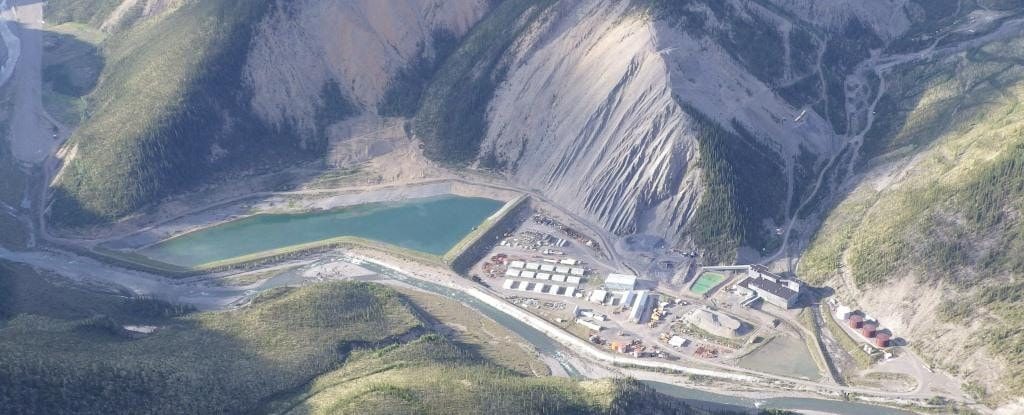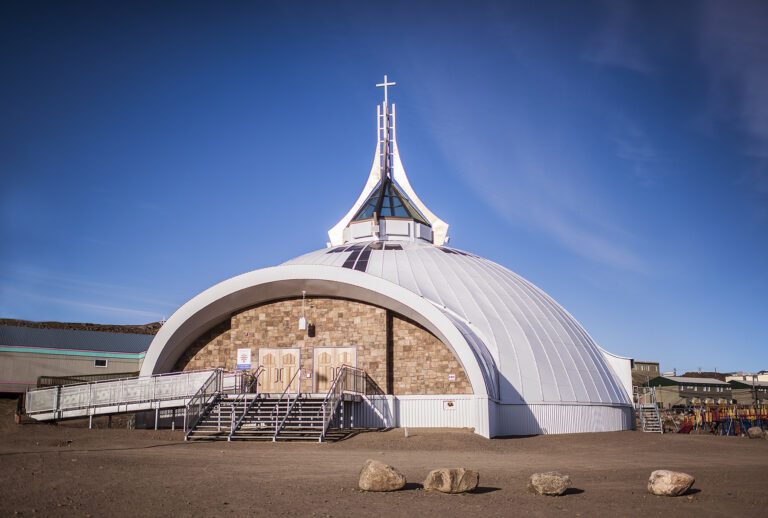On EDGE | OPINION
“If there is another project more scrutinized than this, I’d like to see what it is.”
-Former Canadian Zinc manager Chris Reeves, as reported by Northern Journal, July 2012
Canadian Zinc is heading into yet another environmental assessment for its Prairie Creek mine, this time related to its pursuit of an all-weather road through the narrow canyon that leads to the metals deposit in the heart of Nahanni National Park.
For anyone who has been following this project’s long and winding trail through the regulatory system over the past decade and a half, it’s baffling that the ultimate economic feasibility of the mine has not yet seriously been questioned.
Prairie Creek has never been an operational mine. The ill-fated project was originally built in the early ‘80s by a Texas company that went almost immediately bankrupt when the price of silver plummeted in 1982.
A junior explorer based out of Vancouver, Canadian Zinc took over the property from the federal government in 1991 and has been working to open a lead, zinc and silver mine at the site ever since.
Following three bouts of exploratory drilling, Canadian Zinc completed its last environmental assessment process in 2008. While the mine proposal originally included plans to grandfather in an old winter road to the mine site, Canadian Zinc later admitted the road was so damaged it needed to be reconstructed to all-season standards.
That takes us to the present, where despite raising numerous red flags about inadequate planning to-date, the Mackenzie Valley Environmental Impact Review Board (MVEIRB) is letting the all-weather road project move ahead to the assessment phase.
The company has been told that it has to provide additional information before the technical sessions can begin. The proposed road, which is routed straight out of a steep gorge, includes intense grades and several water crossings, and covers areas underlaid with sensitive karst formations and permafrost that haven’t adequately been accounted for in the plan.
Yet if precedent holds, it’s quite possible these faulty plans will slide through the review process largely unmitigated.
No problems here?
In a final ruling that produced the first-ever set of dissenting opinions in review board history, the Prairie Creek mine was officially given the green light by MVEIRB in 2011 with zero binding conditions.
Despite warranting an environmental assessment and months of public hearings, the project, according to a report to the board, posed no significant adverse environmental impacts and was not a cause of significant public concern. Rather than giving the Mackenzie Valley Land and Water Board a solid list of mitigating measures to enforce, the report offered a set of take-it or leave-it suggestions.
How did this project slip through the rigour of review process unscathed?
Article continues below advertisement
With the federal minister’s final stamp of approval, the plan whizzed off to the board to get the wheels rolling on the necessary licences and permits.
So how did this project slip through the rigour of review process unscathed? Certainly its track record leading up to the environmental assessment wasn’t perfect; as Parks Canada submitted to the Land and Water Board on many occasions, wastewater from the preliminary drilling at the site was found to be polluting the nearby creek for years, essentially unmitigated, with elevated levels of iron, lead, manganese, tungsten and ammonia well above allowable limits.
Further concerns were raised previously about the company’s water treatment solution — a polishing pond that was constructed before the board had even issued the appropriate water licence (it was ultimately approved following its construction). Intervenors like Parks Canada said the polishing pond was not large enough to allow sufficient retention time to have tailings settle out before draining into the creek.
Who cleans up?
It’s hard not to wonder how this company has managed to hang on to its permits, let alone keep progressing through the system. A possible answer could relate to a bit of essential information omitted by both the company and federal government during the environmental assessment for the mine — a matter that was only alluded to during the review until it became clear in late 2013 that the company did not have the means to post the security bonds required to possess valid water licences and land use permits.
When the Land and Water Board asked where the money was, Canadian Zinc finally revealed that it had a surface lease with the federal government for the property from 1987, and that the deal essentially delegates any responsibility for cleanup and remediation to then-Indian and Northern Affairs (INAC).
While the surface lease has not been made publicly available, letters from INAC and Canadian Zinc last year confirmed that the agreement and its Abandonment and Restoration (A&R) Plan remain legally binding, and do not include the full cleanup of the site.
The problem is, the chances of the mine being built and becoming operational in the near future are slim to none
“The A&R Plan was intended to direct the holder of the Surface Lease to complete certain reclamation activities before vacating the site, assuming the holder was not proceeding with mine operations. Those activities would not entail full reclamation of the site,” Canadian Zinc told the review board in early 2014, well after receiving its operational permits.
“The A&R Plan did not consider future liability at all because the Surface Lease was intended for the ‘care and maintenance’ period only, a new or revised lease being required for mine operations.”
In other words, Canadian Zinc was never supposed to clean up the site it inherited; that was going to be INAC’s job, at least until the mine became fully operational.
Perhaps that’s why the minister had no qualms about approving an assessment report that gave no real instructions to the Land and Water Board. After all, if the mine was up and running, it would no longer be the federal government’s responsibility to clean it up.
The deal has certainly tied the hands of the NWT’s regulators who, rather than stripping Canadian Zinc of its licences, were essentially forced to accept a modified security payment schedule from the company. While the territory’s own reclamation policy states that “the total financial security for final reclamation required at any time during the life of the mine should be equal to the total outstanding reclamation liability for land and water combined,” Canadian Zinc gets to post a much smaller amount, to which it will add bonds gradually as it progresses through each phase of construction.
Here’s the breakdown: The surface lease only legally requires Canadian Zinc to pay $2 million in securities, but the board is demanding an additional $7 million. So the company has promised to pay an additional $1 million prior to construction, $3 million a year later, and another $3 million a year after that.
Only when Canadian Zinc has reached a somewhat ambiguous point in the mine’s operations will the company assume responsibility for its cleanup.
“CZN has acknowledged that it would become responsible for all reclamation obligations when the future development of the Mine subsumes the original workings to the point that it would be impractical, if not impossible, to draw a line between what was pre-existing and what is the result of CZN’s new operations,” the company told the board.
“In this sense, CZN has accepted that there will be a time when CZN will become responsible for all of the current and historical reclamation obligations and the related $9 million in security — but that time is not now and will not be until future development of the Prairie Creek Mine has progressed significantly.”
Unlikely prospect
The problem is, the chances of the mine being built and becoming operational in the near future are slim to none. In fact, there is a greater likelihood of the opposite occurring. One needs only to look at the closure of North American Tungsten’s neighbouring Cantung mine to see the impacts of low commodity prices on high-cost operations in the Mackenzie Mountains, and zinc is currently sitting at a stock price of just $0.10.
In its annual report last June, the company reported having just $5 million in working capital. John F. Kearney, the company’s chairman and CEO, told shareholders the mine would require “substantial additional financing” to complete development and construction; but raising that money right now, he concluded, is not going to happen.
“It is not in the best interests of the Company or its shareholders to try to raise substantial financing at an inopportune time in the market and we do not intend to do so,” reads a statement from Kearney.
Along with the hunt for financing, work at the mine has also come to a halt. The company cancelled its underground program, and its water licence is now being held in abeyance “until more certainty develops around the actual commencement of construction.”
Back on the road
So now we come back to the road. Does the company actually want to build an all-weather road where it is almost technically impossible to do so, or is this a chance to delay construction even further, once again masking the fact that the company does not — and possibly never did — have the financial backing to operate this mine?
The bigger question, though, is who inherits this mess?
Canadian Zinc recently told the review board how disappointed it is to have to provide further detail on the road. And why shouldn’t they be? After all, if the technical information isn’t available to effectively cost the road, the review board can’t know with certainty that the company won’t have the funds to complete it, and an environmental assessment will buy some pretty useful time.
The bigger question, though, is who inherits this mess? INAC appears to have successfully shuffled the property off its contaminated sites list in the late ‘80s in what can only be imagined as a fire sale, but one can only sweep dirt under the rug for so long. This mine site could very well need cleaning up before it even becomes operational, and it appears that through the wonders of devolution, the remediation of the existing Prairie Creek development now sits on the lap of the GNWT.
“Administration and control of the lands comprising the Prairie Creek mine site have been transferred to the GNWT, and currently, the Prairie Creek mine site is not a ‘federal area,’” notes a letter from the GNWT to the Land and Water Board.
The territorial government already set a dangerous precedent when it purchased the Mactung property off the recently bankrupt North American Tungsten late last year. It may not be long before it adds another new property to the list; only this time, it might be a contaminated site.







